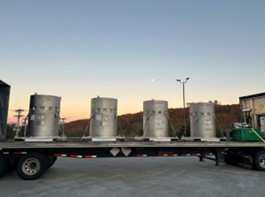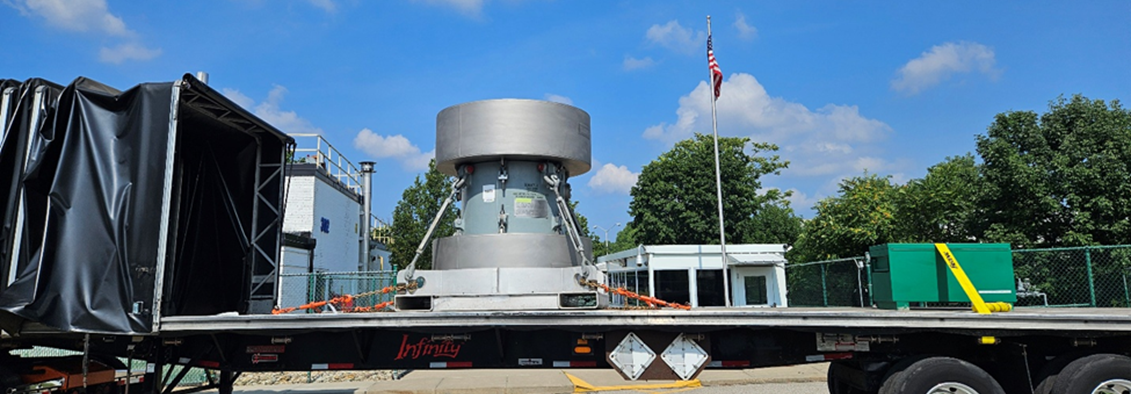U.S. Weapons Complex Projects
NAC has a long and successful history of providing innovative solutions to address the unique waste streams at U.S. Department of Energy (DOE) facilities. Recent examples involve adaptation of NAC’s U.S. Nuclear Regulatory Commission (NRC)-licensed MPC cask system design for storage of cesium and strontium capsules at the DOE Hanford Site in Washington State, and for storage of vitrified high-level waste at the West Valley Demonstration Project in Western New York.
NAC designed a cask handling system for remote and automated unloading of spent fuel transportation casks at the DOE Savannah River Site (SRS) L-Basin in South Carolina. The L-Basin lacks sufficient water depth to handle the length of typical truck transportable casks, requiring the installation of alternate capability.
NAC designed the Shielded Transport System, prepared fabrication specifications, and assisted with installation and checkout at SRS. The system provides high caliber features for shielding of personnel, remote monitoring, and automated operation.
NAC also served on the team originally selected to design, fabricate and deliver cask and transportation systems to remove used nuclear fuel from storage basins at the Hanford Site. The project involved developing the systems to remove 2,300 metric tons of deteriorating spent nuclear fuel from the water-filled K-Basins near the Columbia River and transporting the fuel to a dry storage facility near the center of the Site. NAC's work included design and fabrication of the operations support equipment needed to load the canistered spent nuclear fuel into the transport casks.
NAC was also selected to complete the final design and fabrication of the Multiple Canister Overpack (MCO) loading system for the Hanford Site. The MCO loading system transfers baskets with used fuel from the staging area into the MCO. Expanding on NAC's previous conceptual design, NAC integrated the individual components into the final system design as part of the Hanford used fuel cask transportation system.
NAC designed a cask handling system for remote and automated unloading of spent fuel transportation casks at the DOE Savannah River Site (SRS) L-Basin in South Carolina. The L-Basin lacks sufficient water depth to handle the length of typical truck transportable casks, requiring the installation of alternate capability.
NAC designed the Shielded Transport System, prepared fabrication specifications, and assisted with installation and checkout at SRS. The system provides high caliber features for shielding of personnel, remote monitoring, and automated operation.
NAC also served on the team originally selected to design, fabricate and deliver cask and transportation systems to remove used nuclear fuel from storage basins at the Hanford Site. The project involved developing the systems to remove 2,300 metric tons of deteriorating spent nuclear fuel from the water-filled K-Basins near the Columbia River and transporting the fuel to a dry storage facility near the center of the Site. NAC's work included design and fabrication of the operations support equipment needed to load the canistered spent nuclear fuel into the transport casks.
NAC was also selected to complete the final design and fabrication of the Multiple Canister Overpack (MCO) loading system for the Hanford Site. The MCO loading system transfers baskets with used fuel from the staging area into the MCO. Expanding on NAC's previous conceptual design, NAC integrated the individual components into the final system design as part of the Hanford used fuel cask transportation system.



